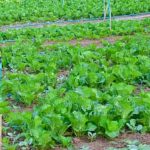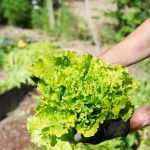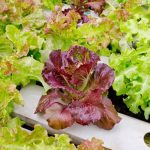Are you considering starting your own vegetable garden but don’t have the space for an in-ground garden? Above ground vegetable gardens may be the solution you’re looking for. In this article, we will explore the benefits of above ground vegetable gardens and provide a comprehensive guide to planning, designing, building, and caring for your very own above ground vegetable garden.
When it comes to growing vegetables, above ground gardens offer several advantages. Not only are they easier to maintain and harvest, but they also provide better control over soil quality, drainage, and pest management. Whether you’re a beginner or a seasoned gardener, above ground vegetable gardens can be a rewarding way to grow your own fresh produce right at home.
In the following sections, we will discuss the factors to consider when planning and designing your above ground vegetable garden, selecting the perfect location for it, and building it from start to finish. We will also provide tips on choosing the right vegetables for your garden, caring for it through watering, feeding, and pest control, as well as harvesting and enjoying the fruits of your labor.
Additionally, we’ll share real-life success stories of thriving above ground vegetable gardens to inspire and motivate you in your gardening journey. So let’s dive in and get started on creating your very own lush and bountiful above ground vegetable garden.
Planning and Designing Your Above Ground Vegetable Garden
Space and Layout
When planning and designing your above ground vegetable garden, it’s important to consider the amount of space you have available. Take into account the size and layout of your garden area, as well as any obstacles or potential limitations. Consider how much sunlight the area receives, as most vegetables require at least 6-8 hours of direct sunlight each day. Additionally, think about the accessibility of the garden for watering, weeding, and harvesting.
Soil Quality
The quality of soil in your above ground vegetable garden is crucial for the success of your crops. Conduct a soil test to determine its pH level and nutrient content. Based on the results, you may need to amend the soil with compost, organic matter, or other nutrients to create an optimal growing environment for your vegetables.
Container Selection
When planning an above ground vegetable garden, select appropriate containers based on the types of vegetables you want to grow. Consider factors such as depth, drainage holes, material (such as wood or plastic), and size. Different vegetables have different root systems and spacing requirements, so choose containers that will adequately accommodate their needs.
Thinking through these factors during the planning and design process will help ensure the success of your above ground vegetable garden. By carefully considering space and layout, soil quality, and container selection, you can set yourself up for a thriving and productive harvest from your above ground vegetable gardens.
Selecting the Perfect Location for Your Above Ground Vegetable Garden
When it comes to selecting the perfect location for your above ground vegetable garden, there are several factors to consider in order to ensure the success of your crops. Here are some key considerations to keep in mind:
1. Sunlight: Choose a location that receives at least 6-8 hours of direct sunlight each day. Vegetables need ample sunlight to thrive and produce high yields.
2. Accessibility: Select a spot that is easily accessible for watering, weeding, and harvesting. You’ll want to be able to reach all areas of your garden without trampling on your plants.
3. Soil Quality: Pay attention to the quality of the soil in the chosen location. It’s important to have well-draining soil with good fertility and pH levels suitable for vegetable growth.
4. Protection from Wind: Consider the wind patterns in your area and choose a location that provides some level of protection from strong winds, which can damage or uproot plants.
5. Space Availability: Ensure that you have enough space for your above ground vegetable garden, taking into account the full size of mature plants and any support structures needed, such as trellises or cages.
Once you’ve taken these factors into account, you can proceed with planning and designing your above ground vegetable garden with confidence, knowing that you’ve selected an ideal location for optimal growth and productivity.
Building Your Above Ground Vegetable Garden
When it comes to building an above ground vegetable garden, there are a few key steps to follow in order to ensure the success of your garden. Here’s a step-by-step guide to help you get started:
1. Choose the Right Materials: Decide on the material you want to use for your above ground vegetable garden. Popular options include raised beds made of wood, concrete blocks, or metal troughs. Each material has its own benefits, so consider factors such as durability, cost, and aesthetic appeal.
2. Determine the Size and Shape: Consider how much space you have available and what types of vegetables you want to grow. The size and shape of your above ground vegetable garden will depend on these factors. Keep in mind that the width of your raised bed should be no wider than 4 feet so that you can easily access all parts of the bed without having to step on the soil.
3. Prepare the Area: Before building your above ground vegetable garden, clear the area of any debris or vegetation. Level the ground if necessary, and consider laying down a weed barrier such as landscaping fabric to prevent weeds from growing up into your raised bed.
4. Assemble Your Garden Bed: Once you have gathered all the necessary materials and prepared the area, it’s time to assemble your above ground vegetable garden. Follow the instructions for your chosen material and make sure that everything is secure and level before adding soil.
By following these steps, you can build a sturdy and productive above ground vegetable garden that will provide a bountiful harvest for years to come.
Choosing the Right Vegetables for Your Above Ground Garden
When it comes to choosing the right vegetables for your above ground vegetable garden, there are several factors to consider. One of the most important factors is the amount of space available in your garden.
Some vegetables, such as tomatoes and zucchini, require a lot of room to spread out, while others, like lettuce and spinach, can be grown in smaller spaces or even in containers. It’s important to research each vegetable you’re considering planting to determine how much space they need to thrive.
Another consideration when choosing vegetables for your above ground garden is the climate and weather conditions in your area. Certain vegetables are better suited for cooler climates, while others thrive in hotter temperatures. Additionally, some vegetables require more sunlight than others. Be sure to take these factors into account when making your selections.
In addition to space and climate considerations, think about what you enjoy eating. After all, the goal of growing your own vegetables is to have fresh produce that you will actually enjoy consuming. Consider the types of vegetables that you and your family use most often in cooking and meal preparation.
Finally, it’s important to consider the level of maintenance required for each type of vegetable. Some plants require more attention and care than others. If you’re a novice gardener or have limited time to dedicate to gardening, it may be best to start with low-maintenance vegetables before progressing to more demanding ones.
| Factors | Considerations |
|---|---|
| Space Available | Determine how much room each vegetable needs |
| Climate | Consider temperature and sunlight requirements |
| Taste Preference | Select vegetables that you enjoy eating |
Caring for Your Above Ground Vegetable Garden
Watering Strategies
One of the most important aspects of caring for above ground vegetable gardens is ensuring that your plants receive adequate water. Since above ground gardens typically have better drainage than traditional in-ground gardens, it’s crucial to monitor the moisture levels regularly.
Depending on the climate and weather conditions in your area, you may need to water your above ground vegetable garden more frequently. Utilizing a drip irrigation system can be an efficient way to ensure that your plants receive consistent moisture without overwatering.
Feeding Your Plants
In addition to watering, feeding your above ground vegetable garden with the appropriate nutrients is essential for healthy plant growth. Consider using organic fertilizers or compost to provide your plants with the necessary nutrients they need to thrive. It’s important to follow the recommended feeding schedule for each type of vegetable you are growing, as different plants have varying nutritional requirements.
Pest Control Methods
Pest control is another critical aspect of caring for your above ground vegetable garden. Regularly inspect your plants for signs of pests and take proactive measures to prevent infestations. Natural pest control methods such as introducing beneficial insects, like ladybugs or praying mantises, can help keep unwanted pests at bay. Additionally, utilizing natural remedies such as neem oil or garlic spray can effectively deter pests without harming the environment or beneficial insects.
By implementing proper watering strategies, feeding your plants with the right nutrients, and employing effective pest control methods, you can ensure that your above ground vegetable garden thrives and produces an abundant harvest for you to enjoy.
Harvesting and Enjoying the Fruits of Your Labor
Harvesting your above ground vegetable garden can be one of the most rewarding experiences of gardening. There’s nothing quite like picking fresh, ripe vegetables from your own garden and enjoying them at the dinner table. To ensure a successful harvest, it’s important to keep a few key tips in mind.
First, timing is everything when it comes to harvesting your vegetables. Make sure to research and understand the optimal time to pick each type of vegetable in your garden. For example, tomatoes should be harvested when they are fully colored and slightly firm to the touch, while zucchinis are best picked when they are small and tender.
Secondly, proper handling is crucial for preserving the quality of your harvest. Be gentle when picking your vegetables and use a sharp knife or pruning shears to avoid damaging the plant. Additionally, store your harvested vegetables in a cool, dark place or in the refrigerator to maintain their freshness.
Finally, don’t forget to celebrate and enjoy the fruits of your labor. Whether you’re creating delicious meals with your homegrown produce or sharing with friends and neighbors, there’s no better feeling than savoring the results of all your hard work.
| Tips for Harvesting | Details |
|---|---|
| Timing | Research optimal harvesting times for each vegetable |
| Handling | Use a sharp knife or pruning shears; store in a cool place |
| Celebration | Create meals with homegrown produce and share with others |
Success Stories
In recent years, above ground vegetable gardens have gained popularity among gardening enthusiasts due to their numerous benefits. These innovative gardening solutions offer a wide range of advantages, including better soil quality, improved accessibility, and reduced risk of pests and diseases. As more and more people embrace the idea of growing their own vegetables, success stories of thriving above ground vegetable gardens continue to inspire others to embark on their own gardening journey.
One notable success story of an above ground vegetable garden comes from the Smith family in suburban California. With limited space in their backyard, they decided to build raised beds for their vegetable garden.
By carefully planning the layout and selecting the right vegetables for their climate, they were able to yield an abundant harvest of tomatoes, peppers, and cucumbers. The elevated beds also provided easier access for tending to the plants and harvesting the produce, making gardening a convenient and enjoyable experience for the entire family.
Another inspiring example of a thriving above ground vegetable garden is found in urban Chicago, where community members came together to create a shared garden in a vacant lot. By utilizing raised bed designs and implementing sustainable gardening practices, they were able to transform the neglected space into a bountiful source of fresh produce.
The successful collaboration not only provided nutritious food for the community but also fostered a sense of unity and pride among those involved in maintaining the garden.
These real-life success stories demonstrate the potential for above ground vegetable gardens to thrive in various settings, from suburban backyards to urban public spaces. By leveraging innovative gardening techniques and thoughtful planning, individuals and communities alike can enjoy the rewards of growing their own healthy and delicious vegetables while contributing to a sustainable food system.
Conclusion
In conclusion, above ground vegetable gardens offer numerous benefits and opportunities for individuals to embrace the joy of growing and harvesting their own vegetables. The process of planning, designing, building, and caring for an above ground vegetable garden can be a fulfilling and rewarding experience. By selecting the perfect location, choosing the right vegetables, and implementing proper care techniques such as watering, feeding, and pest control, gardeners can create thriving gardens with bountiful harvests.
One of the most satisfying aspects of having an above ground vegetable garden is the ability to enjoy the fruits of your labor. There is nothing quite like the taste of freshly picked vegetables from your own garden. Whether it’s crisp lettuce for a salad, juicy tomatoes for a sandwich, or crunchy carrots for a snack, the satisfaction of knowing that you grew these ingredients yourself adds an extra layer of enjoyment to every meal.
Furthermore, success stories from real-life examples demonstrate that with dedication and proper maintenance, anyone can create a thriving above ground vegetable garden. From small balcony gardens to expansive backyard plots, individuals around the world are embracing the joy of growing their own vegetables and reaping the rewards.
As more people discover the benefits and satisfaction of cultivating their own produce through above ground vegetable gardens, this trend continues to grow in popularity. Whether you are an experienced gardener or just starting out on your gardening journey, consider starting your own above ground vegetable garden and experience the joy of growing your own food firsthand.
Frequently Asked Questions
What Veggies Are Best for Above Ground Garden?
The best vegetables for an above ground garden are those with shallow roots, such as lettuce, spinach, radishes, and herbs like parsley and basil. These plants thrive in the nutrient-rich soil and good drainage of raised beds.
How Deep Should an Above Ground Vegetable Garden Be?
The depth of an above ground vegetable garden really depends on the type of vegetables you want to grow. Generally, a depth of 12-18 inches is recommended to accommodate most vegetable roots. However, some plants may require deeper soil, so it’s important to research the specific needs of your chosen vegetables.
What Vegetables Do Not Grow Well in Raised Beds?
While many vegetables thrive in raised beds, there are a few that may not do as well. Deep-rooted vegetables like carrots and parsnips may struggle to grow properly in the shallow soil of raised beds. Additionally, vining plants such as pumpkins or watermelons might take up too much space unless given proper support within the raised garden bed.

If you’re looking to get into vegetable gardening, or are just looking for some tips on how to make your current garden better, then you’ve come to the right place! My name is Ethel and I have been gardening for years. In this blog, I’m going to share with you some of my best tips on how to create a successful vegetable garden.





